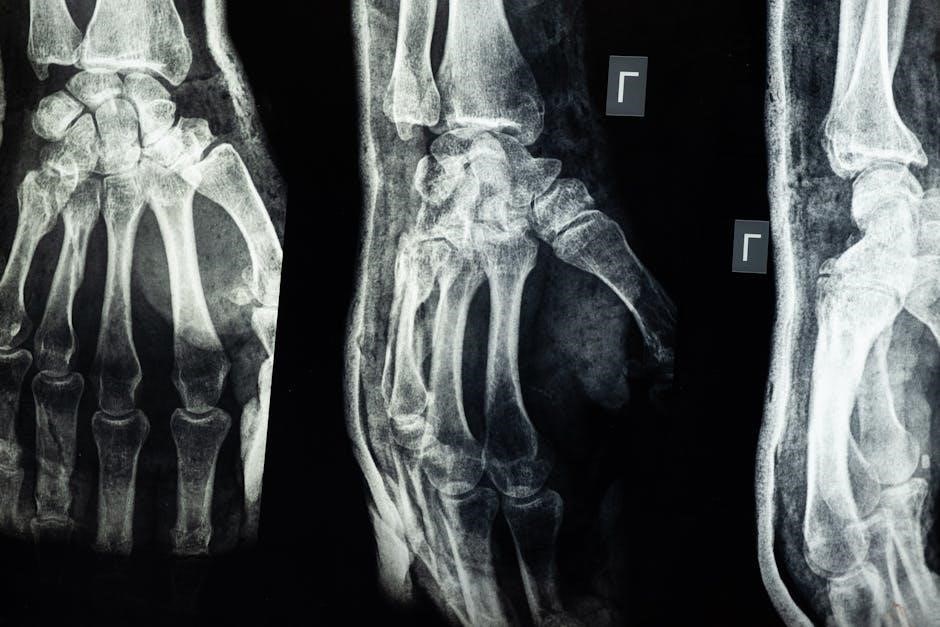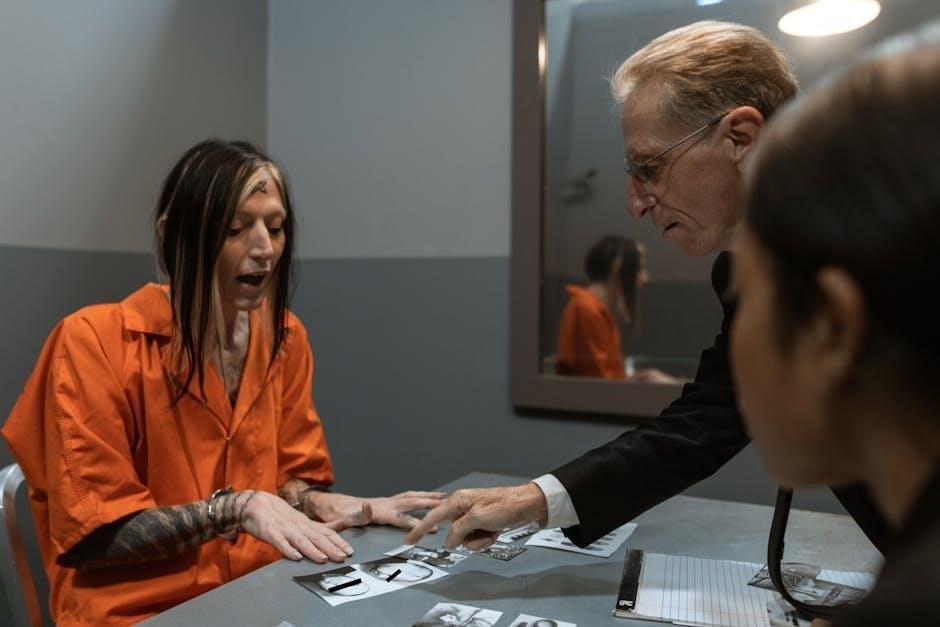The atomic bomb‚ a controversial and destructive weapon‚ drastically altered history. Its development stemmed from early physics discoveries. The Manhattan Project‚ a crucial initiative‚ led to its creation. This weapon’s impact was immense‚ shaping global politics and initiating the nuclear age. The bomb’s story starts with physicists exploring radioactivity.
The Controversial Nature of Atomic Weapons
Atomic weapons are among the most controversial inventions in human history‚ sparking intense ethical debates and discussions. The immense destructive power of these weapons‚ capable of unleashing energy on an unprecedented scale‚ raises profound questions about their use and impact on humanity. The development of the atomic bomb during World War II‚ while seen by some as a necessary step to end the conflict‚ is also viewed as a tragic event that led to the loss of countless innocent lives. The use of atomic bombs on Hiroshima and Nagasaki remains a contentious topic‚ with strong arguments on both sides regarding their justification. This use marked a turning point‚ ushering in the nuclear age and leaving a lasting legacy of fear and uncertainty. The proliferation of nuclear arms and the potential for their use continue to raise global concerns and anxieties‚ making the controversial nature of atomic weapons a constant and urgent issue. The very existence of atomic weapons and the knowledge of their destructive power has also led to the development of complex strategies and considerations in international relations.

The Manhattan Project
The Manhattan Project was a scientific and military endeavor to develop the atomic bomb during World War II. This project involved significant research and development at various key locations and included the work of many scientists and engineers.
The Genesis of the Manhattan Project
The Manhattan Project’s origins trace back to the growing scientific understanding of nuclear fission in the 1930s. Key discoveries in nuclear physics‚ particularly concerning the behavior of atoms‚ laid the groundwork for considering a nuclear weapon. The threat of Nazi Germany’s potential development of such a weapon prompted concerns. In August 1939‚ Albert Einstein‚ among others‚ wrote to President Franklin D. Roosevelt‚ warning about Germany’s efforts and urging the United States to pursue its own atomic research. This letter played a crucial role in initiating the project. The official launch occurred in December 1941‚ after the Japanese attack on Pearl Harbor‚ further accelerating the urgency. The project sought to consolidate and expedite existing research on nuclear fission‚ aiming to build a working device and secure a potential military advantage. Prior to this‚ the UK had begun similar research under the name Tube Alloys and collaborated with the US on what would become the Manhattan Project. The urgency was propelled by fears of the Axis powers getting there first.
Key Locations⁚ Oak Ridge‚ Hanford‚ Los Alamos
The Manhattan Project was spread across several key locations‚ each with a distinct role. Oak Ridge‚ Tennessee‚ was pivotal for uranium enrichment. Both electromagnetic and gaseous diffusion methods were used to separate the fissionable uranium-235 from uranium-238. The process was essential for creating bomb material. Hanford‚ Washington‚ focused on plutonium production. Here‚ reactors converted uranium into plutonium-239‚ a critical fissile material; The scale of production was massive‚ requiring extensive facilities and infrastructure. Los Alamos‚ New Mexico‚ was the scientific heart of the project. This laboratory was where the bomb’s design and assembly took place. Scientists developed the means to achieve a supercritical mass and control the timing of the explosion. Los Alamos was led by J. Robert Oppenheimer. These sites worked together to transform theoretical physics into a functional atomic bomb.
Role of Key Scientists⁚ Oppenheimer‚ Fermi‚ etc.
The Manhattan Project relied on the expertise of numerous scientists. J. Robert Oppenheimer‚ a brilliant theoretical physicist‚ directed the Los Alamos laboratory‚ overseeing the bomb’s design and development. His leadership was crucial for coordinating the diverse scientific efforts. Enrico Fermi‚ a Nobel laureate‚ played a vital role in the development of the first nuclear reactor. His work in Chicago paved the way for plutonium production at Hanford. Other key figures included Edward Teller‚ known for his later work on the hydrogen bomb‚ and Leo Szilard‚ who initially warned about the potential of atomic weapons. These scientists‚ and many others‚ contributed their knowledge and skills to overcome the complex challenges of the project. Their collaborative work transformed abstract physics into practical reality‚ leading to the creation of the atomic bomb.

Development of the Atomic Bomb
The development involved complex scientific and engineering challenges. Scientists explored nuclear fission and chain reactions. Achieving supercritical mass was crucial for an explosion. The Trinity test marked the first successful detonation. The project pushed the boundaries of human knowledge.
Fission and Chain Reaction Concepts
The fundamental principle behind the atomic bomb lies in nuclear fission‚ the process where an atom’s nucleus splits into smaller nuclei‚ releasing substantial energy. This phenomenon‚ discovered in the 1930s‚ revealed the immense power locked within atoms. Key to the atomic bomb was the ability to initiate and sustain a chain reaction. This occurs when the fission of one atom releases neutrons that cause fission in other atoms‚ creating a cascading effect. The design of the bomb required precise control over this chain reaction‚ ensuring a rapid release of energy. Scientists like Fermi and Szilard were instrumental in understanding these concepts‚ laying the groundwork for the Manhattan Project. The understanding of these processes was crucial for harnessing the destructive power of atomic energy.
The Challenge of Achieving Supercritical Mass
A critical challenge in developing the atomic bomb was achieving supercritical mass. This refers to the precise amount of fissile material needed to sustain a chain reaction and trigger a nuclear explosion. Achieving this required meticulous calculations and engineering. The fissile material‚ such as uranium-235 or plutonium-239‚ must be brought together quickly and efficiently to avoid a fizzle or premature chain reaction. Scientists at Los Alamos‚ under Oppenheimer’s leadership‚ worked tirelessly to determine the optimal shape and configuration for the fissile core. They experimented with different methods of implosion to compress the material. The task of assembling a supercritical mass was complex‚ demanding precise timing and material control. Overcoming this challenge was essential to creating a functional atomic weapon.
The First Successful Test⁚ The Trinity Test
The culmination of the Manhattan Project’s efforts was the Trinity Test‚ the first successful detonation of an atomic bomb. This landmark event took place on July 16‚ 1945‚ in the desert near Alamogordo‚ New Mexico. The test involved the implosion-type plutonium bomb‚ nicknamed “Gadget.” The explosion unleashed an unprecedented amount of energy‚ equivalent to 21‚000 tons of TNT‚ and created a massive mushroom cloud. The test was conducted to verify the bomb’s design and functionality. The success of the Trinity Test demonstrated that the principles of nuclear fission could be harnessed for immense destructive power. This test marked a turning point‚ showcasing the potential impact of atomic weapons. It was a significant moment in the history of nuclear weapons.

The Use of Atomic Bombs
The use of atomic bombs remains highly controversial. The United States dropped bombs on Hiroshima and Nagasaki. These events caused immense devastation and loss of life. The bombings prompted Japan’s surrender and marked the start of the nuclear age.
Hiroshima and Nagasaki Bombings
The atomic bombings of Hiroshima and Nagasaki in August 1945 remain the only instances of nuclear weapons used in warfare. On August 6th‚ the “Little Boy” bomb was dropped on Hiroshima‚ causing immediate devastation and killing tens of thousands. Many more later died from radiation poisoning. Three days later‚ “Fat Man” was detonated over Nagasaki‚ resulting in similar catastrophic consequences. These events forced Japan’s unconditional surrender‚ effectively ending World War II. The bombings were authorized by U.S. President Harry S. Truman‚ who believed they were necessary to avoid a costly invasion. The immense loss of civilian lives and the long-term effects of radiation made these actions a subject of intense ethical debate and controversy. These catastrophic events ushered in the nuclear age with profound global ramifications.
Impact and Consequences of the Bombings
The atomic bombings of Hiroshima and Nagasaki had a profound and lasting impact‚ extending far beyond the immediate destruction. The immediate effects included massive casualties‚ with tens of thousands of people killed instantly and many more succumbing to radiation sickness in the following months and years. The physical devastation was immense‚ with entire cityscapes reduced to rubble. These bombings also ushered in the nuclear age‚ completely reshaping global geopolitics and creating an era defined by the threat of nuclear annihilation. The long-term effects of radiation exposure continue to affect survivors and their descendants. The events also spurred significant debate about the morality of using such destructive weapons‚ the implications of nuclear technology‚ and the ethical responsibilities associated with scientific advancements. The bombings remain a stark reminder of the destructive potential of nuclear weapons.

Post-War Developments
After World War II‚ the Soviet Union started its own atomic bomb program. This initiated a nuclear arms race and intensified the Cold War. Both countries developed even more destructive hydrogen bombs. The threat of nuclear war became a reality.
The Soviet Atomic Bomb Program
Following the devastation of Hiroshima and Nagasaki‚ the Soviet Union‚ spurred by the American atomic monopoly‚ accelerated its own nuclear weapons program. The Soviet project‚ initiated shortly after World War II‚ was driven by a desire to match the United States’ atomic capabilities. Key figures like Igor Kurchatov and Yuli Khariton led the Soviet scientific efforts‚ working under intense pressure. Espionage played a role‚ potentially saving the Soviets time‚ though their main challenge was securing uranium ore. The first Soviet atomic bomb‚ RDS-1‚ was successfully tested‚ marking the end of the American nuclear monopoly and escalating the Cold War tensions. This development significantly shifted global power dynamics‚ introducing a new era of nuclear competition.
The Cold War and Nuclear Arms Race
The development of atomic weapons by both the United States and the Soviet Union ignited the Cold War and a fierce nuclear arms race. The two superpowers engaged in a relentless pursuit of nuclear superiority‚ leading to the creation of increasingly destructive weapons‚ including hydrogen bombs. This arms race fueled a climate of fear and suspicion‚ with the threat of nuclear annihilation constantly looming. The deployment of nuclear weapons and delivery systems became central to Cold War strategy‚ creating a dangerous balance of power. The fear of mutually assured destruction (MAD) ultimately prevented large-scale nuclear conflict‚ but the tension and competition defined a significant period of history. This period saw the deployment of nuclear weapons on various bases‚ heightening the stakes even further.



